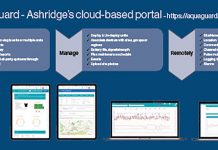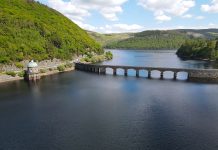Stormwater runoff is regularly managed using some form of flow control and attenuation with the aim of protecting downstream assets and urban areas from flooding during extreme weather events. These flow controls and attenuation structures can be above or below ground, but are often not in close proximity to the managers and teams of personnel who are tasked with maintaining them. In order to prevent potential flood events and pollution incidents when the system is put under stress, operators need to know which assets need maintaining and when. So how do we know what the asset is doing during its operation?
The solution is remote monitoring. As many of the flow controls and attenuation assets are not near mains power, the monitoring solutions should be stand-alone, battery powered, and operated remotely. This allows maintenance teams to optimise working time and not travel unnecessarily to or between assets. Monitoring delivers peace of mind that the asset is performing within design parameters and provides early awareness of developing maintenance or operational needs. Remote operation of the monitoring solution also allows the user to change monitoring parameters to improve the data’s usefulness.
The type and amount of data needed is as variable as the sites for which monitoring is implemented. For example, only water level measurements may be needed in boreholes, but level and quality data might be required from stormwater treatment devices. The monitoring solutions must be adaptable to different environments and applications so they can collect meaningful data, not designed solely to be only used once in one location.
Hydro International’s solution
Hydro International’s solution is the Hydro-Logic™ range of stand-alone, remote, battery-powered data loggers. These “smart monitoring” devices work with various sensor inputs, enabling them to collect multiple different types of data. The loggers are built for robust operation within wet weather and extreme environments, such as ATEX rated zones, and link up to a global data management platform so the collected data is easy to access and analyse. The range consists of four core data logger platforms:
• Hydro-Logic™ Flexi Logger
• Hydro-Logic™ Level Logger
• Hydro-Logic™ Flow Logger
• Hydro-Logic™ Weather Logger
These loggers combine with the Hydro-Logic™ Timeview platform for alerting and data visualisation, and the AQUARIUS Time-Series database for long-term data warehousing, manipulation and analysis.
The following examples demonstrate how the Hydro-Logic™ Level Logger may be used for monitoring flow controls, geocellular attenuation and combined sewer overflows (CSOs):
Monitoring Flow controls – Hydro-Logic™ Level Logger 100
Monitoring the level of water upstream of flow controls allows users to effectively derive the flow-rate of water being conveyed through their system without the complexity of installing and maintaining a flow sensor, which are often less accurate than level sensors. Knowing the head of water upstream of a precisely manufactured flow control enables the flow-rate to be derived. Combining knowledge of rising water levels and the associated flow rate can provide flood warning and enable impact assessments to be made.
Monitoring attenuation – Hydro-Logic™ Level Logger 100
Monitoring attenuation, such as geocellular tanks, ponds and culverts, is useful for assessing whether the attenuation is being used to its full capacity. This may lead to a potential redesign and optimisation of the sewer system to increase capacity used and react to our changing weather patterns and climate conditions or to provide early warning of potential overtopping. Level monitoring over time can also indicate the loss of capacity from the system caused by the depositing of sediments and other debris. The observed upward trend in the water level can be used to inform maintenance teams that work will soon need to be carried out.
Monitoring CSOs – Hydro-Logic™ Level Logger 300Ex
CSOs have a detrimental effect on the environment and can pose a time-limited health risk. Event Duration Monitoring (EDM) allows event management processes to be initiated (e.g. closing beaches during an incident). Recording, tracking and analysis of this data can demonstrate compliance with licenses or consents, and can also help engineers determine where sewer improvement works will be most effective in meeting increases in sewer flow-rates due to urbanisation and population growth. Monitoring CSOs is now a legal requirement, with all CSOs needing to be monitored by 2020.
Meeting the challenges of today and tomorrow
Monitoring operational assets provides insight into current and future conditions, and allows operators to maximise maintenance efficiency and improve flood event response times. Hydro International have developed a range of adaptable and robust remote smart monitoring products to help the water industry to plan, act and react. The units are capable of collecting and storing multiple types of different data for use in understanding how the installed and operational systems behave. This allows for sewer optimisation, improved flood mitigation and response, and network improvements to meet changes in population, urbanisation and climate conditions.







